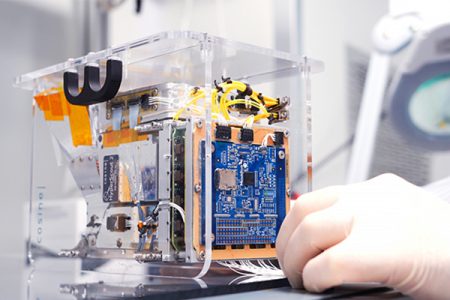 American technology company Intel has announced its contribution to a satellite named PhiSat-1 by powering it with an onboard artificial intelligence (AI), thanks to an Intel Movidius Myriad 2 Vision Processing Unit (VPU).
American technology company Intel has announced its contribution to a satellite named PhiSat-1 by powering it with an onboard artificial intelligence (AI), thanks to an Intel Movidius Myriad 2 Vision Processing Unit (VPU).
The AI software that runs on the Intel Myriad 2 on PhiSat-1, was created by Irish startup Ubotica, which worked with the hardware maker behind the hyperspectral camera.
The satellite was launched last month along with 45 other similarly small satellites as part of Arianespace’s first rideshare demonstration mission.
The VPU is the same chip which can be found inside many smart cameras and even a $99 selfie drone. PhiSat-1 is actually one of a pair of satellites on a mission to monitor polar ice and soil moisture, while also testing inter-satellite communication systems in order to create a future network of federated satellites.
Intel, European Space Agency, Ubotica, and camera maker Cosine worked together to launch and test the satellite. PhiSat-1’s onboard processing test was designed to identify and discard cloudy images in order to reduce bandwidth requirements by roughly 30%.
By only sending useful pixels, the satellite will now “improve bandwidth utilisation and significantly reduce aggregated downlink costs” — not to mention saving scientists’ time on the ground.
“The capability that sensors have to produce data increases by a factor of 100 every generation, while our capabilities to download data are increasing, but only by a factor of three, four, five per generation,” said Gianluca Furano, data systems and onboard computing lead at the European Space Agency.
Aubrey Dunne, chief technology officer of Ubotica remarked: “The Myriad was absolutely designed from the ground up to have an impressive compute capability but in a very low power envelope, and that really suits space applications.”












Add Comment